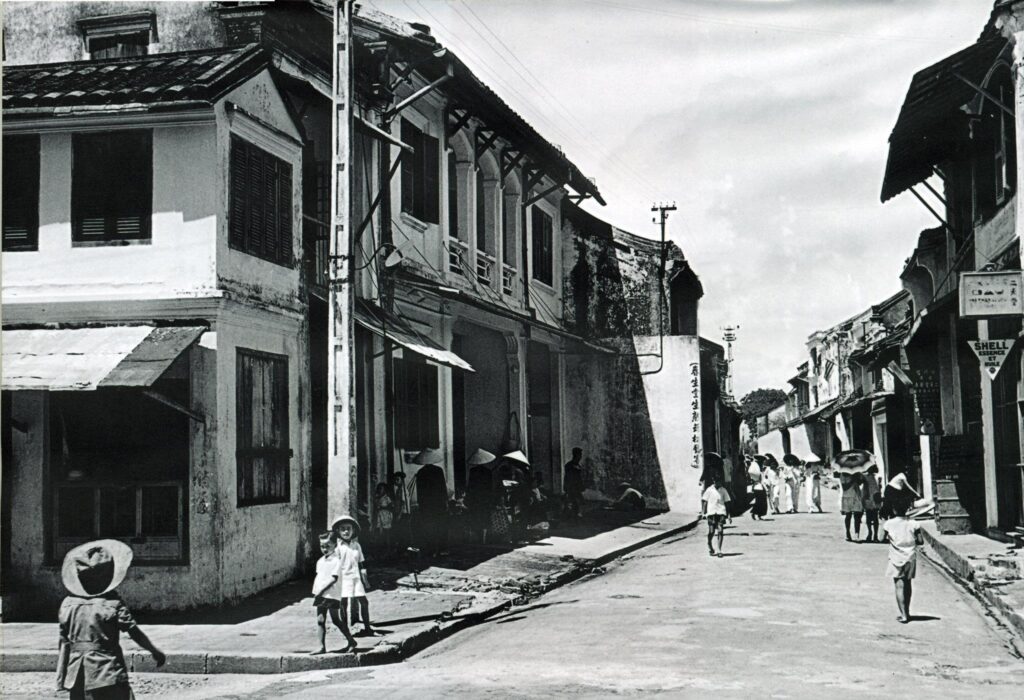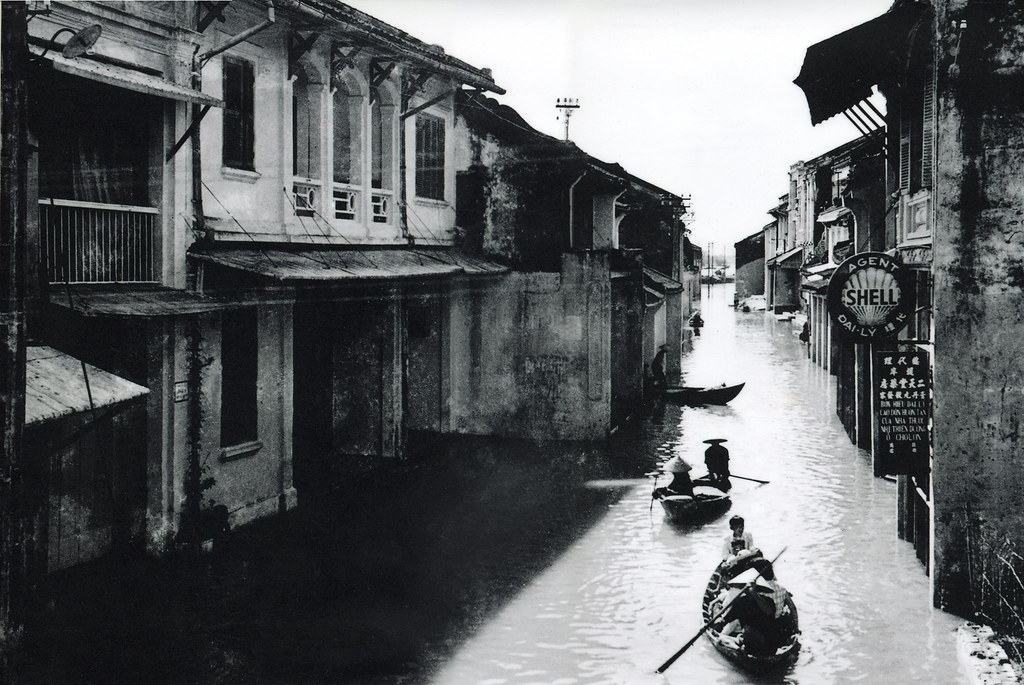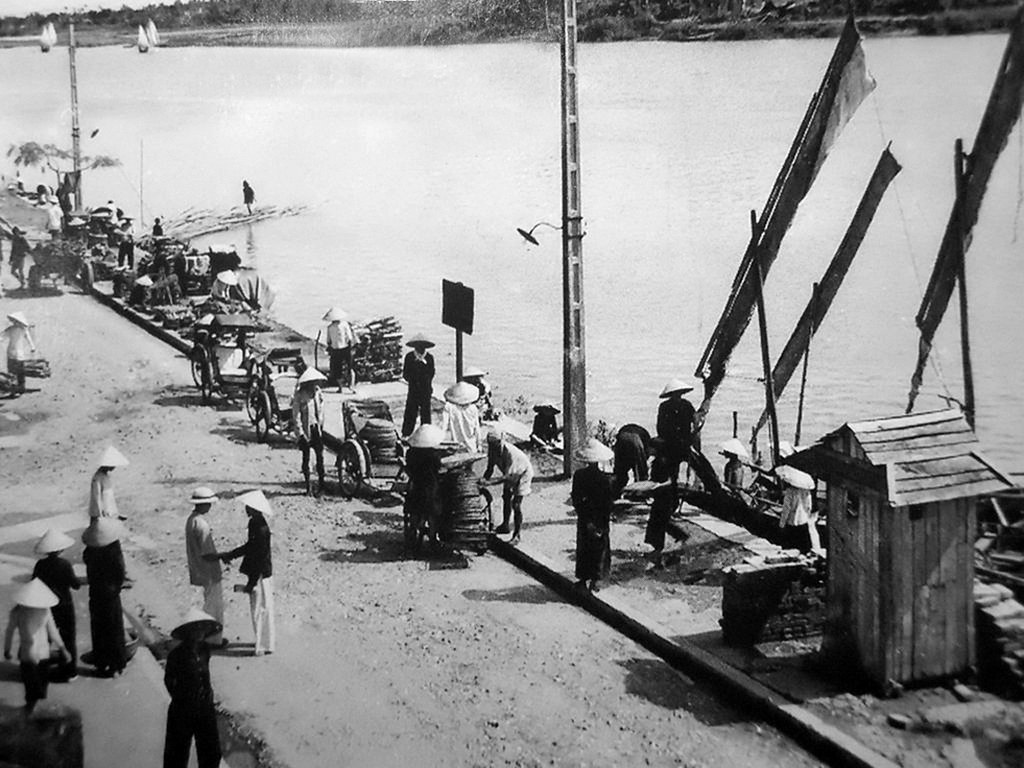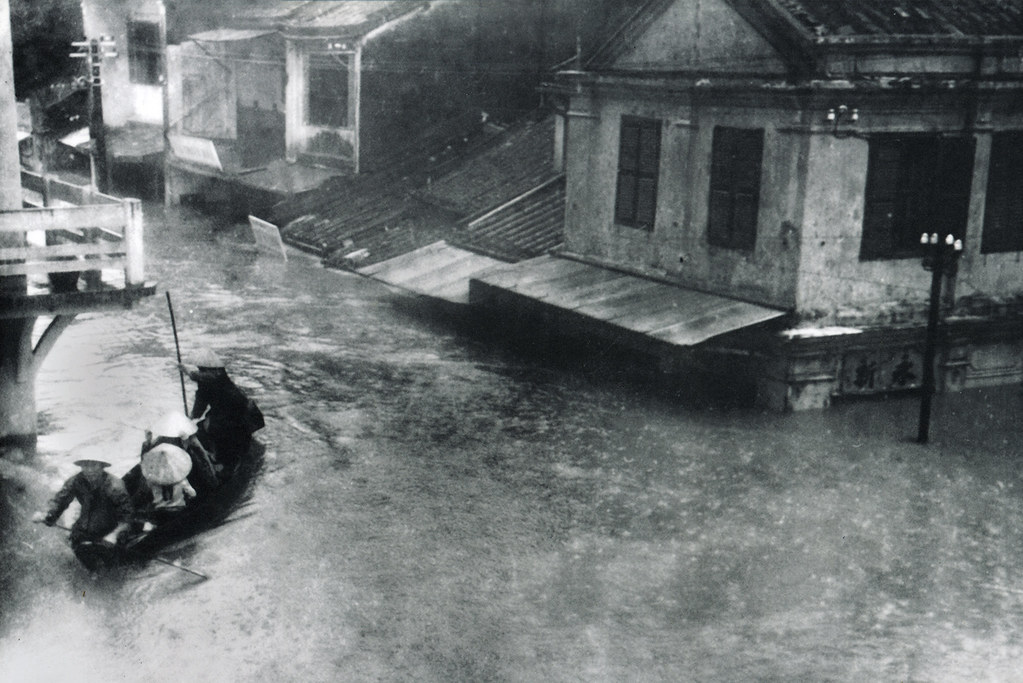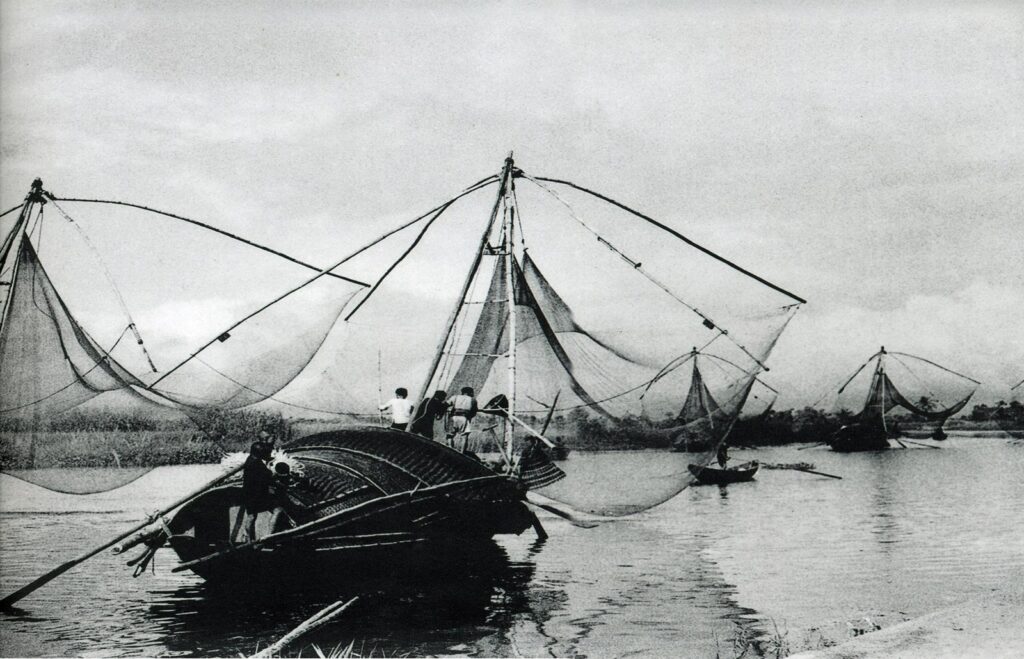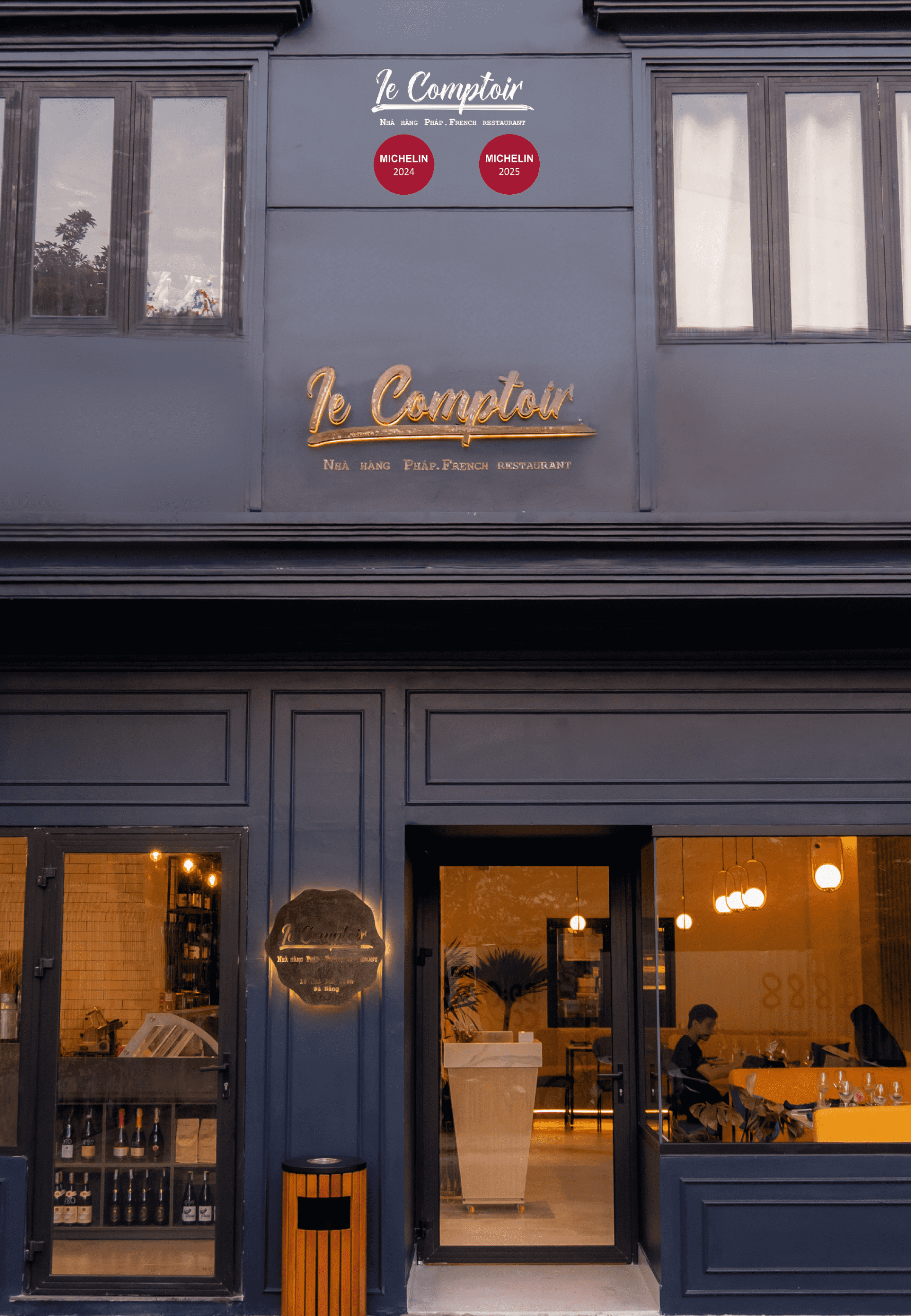Hoi An in the 1950s was a charming and bustling trading port nestled along the banks of the Thu Bon River in central Vietnam. It was a time when the town’s rich history and cultural heritage thrived amidst a period of political change. Hoi An’s vibrant streets were lined with traditional yellow-walled houses adorned with ornate wooden carvings and hanging silk lanterns, transporting visitors back to a bygone era.
The town’s trading activity was at its peak, with ships from all corners of the world docking at its port, bringing goods and influences from diverse cultures. The air was filled with the enticing aromas of local street food, and the sound of merchants haggling and craftsmen working on their intricate creations. Hoi An’s tranquil canals and arched bridges served as picturesque backdrops to everyday life.
The town exuded a unique blend of Southeast Asian, Chinese, and Japanese influences, creating a mesmerizing tapestry of architectural beauty. Hoi An in the 1950s was a captivating time and place where history, tradition, and commerce seamlessly intertwined, leaving an indelible mark on the town’s cultural legacy.






